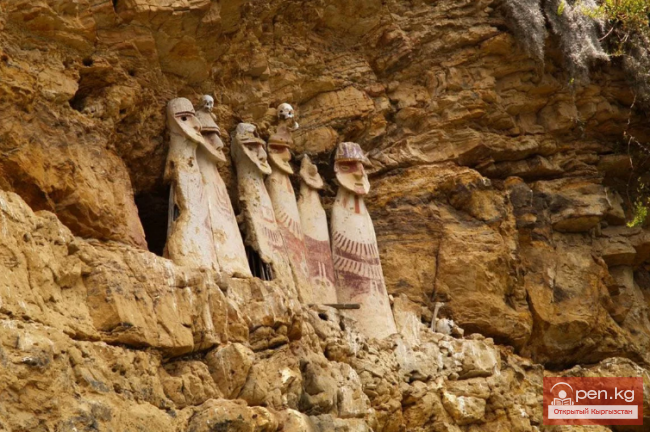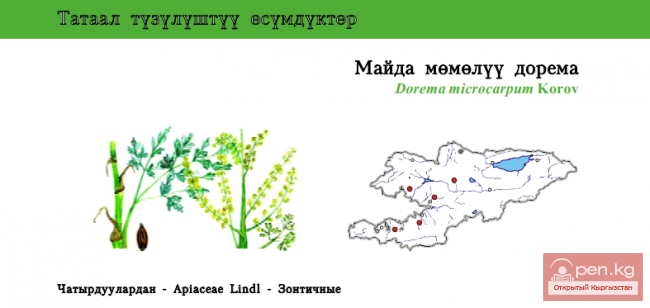White Indians of Chachapoya
In 2015, a major archaeological exhibition of Andean peoples took place in Lima, the capital of Peru. For the first time, it showcased a rich collection of artifacts related to the mysterious Chachapoya Indians, whom the Incas referred to as "those who live above the clouds" or "warriors of the clouds," as they lived in settlements located on the slopes of mountains.
Chachapoya is a pre-Columbian Indian culture, one of the most advanced civilizations of ancient Amazonia, existing approximately between 800 and 1500 AD, although its history may go back much further.
Representatives of this ancient culture inhabited a mountainous plateau — the territory of the modern Peruvian region of Amazonas — and called themselves "Warriors of the Clouds."
During deforestation in the Peruvian province of Amazonas, workers discovered an ancient fortress built in the 14th century, as later established by scientists. The structure was located at an altitude of 2,500 meters above sea level and covered an area of 20 hectares. Remarkably, on such a large territory, there were only a few houses, terraces, and three cemeteries.
Three months prior to this, a silver shield and arrows with volcanic stone tips were found nearby. The equipment was of quite high quality, indicating that those who made it had a well-developed understanding of metallurgical production. At that time, the best craftsmen lived in the Andes, not on the plains. These items were created by the representatives of the mysterious Chachapoya tribe.

The unique natural conditions reliably isolated the lands inhabited by this mysterious people from the rest of the world. The Chachapoya civilization developed and existed in a peculiar triangle. Two sides were formed by the turbulent rivers Uailaga and Marañón, while the third was comprised of rocky mountain ridges and impenetrable jungles. Access to this lost world was possible either through turbulent mountain streams or through dense jungles and difficult-to-navigate Amazonian Andes.
Around the 9th century, they built the most astonishing fortress of this tribe – Kuélap, the elder sister of the one mentioned above. It was discovered in 1843 at an altitude of 3,000 meters. Likely, it was the inaccessibility of the fortress that became the main obstacle to its study, as it only began to attract the attention of scientists in recent times.

The fortress was rediscovered in 1964 by American Eugene Savoy, and before that, it had simply been forgotten! Incredible as it may seem, the construction of the citadel, which is still difficult to access today, required twice as many stones as the construction of the Great Pyramid of Giza.
Twenty-one years later, the same scientist discovered a giant city. But the most astonishing discovery awaited him just a year later. In 1986, an ancient tomb was found, and three slabs with inscriptions were embedded in its walls. Before this, it was believed that there was no writing in ancient Peru at all. But how surprising it was for scientists to realize that the language on the stones was ancient Hebrew! Moreover, it apparently came from Egyptian and Phoenician sources from the time of the Old Testament. And this was in a city built in 800 AD, thousands of kilometers away from Israel. These slabs also bore a symbol resembling the ship of King Solomon, sent by him to Ophir, a mysterious land in East Africa, for gold. Savoy suggested that the slabs were delivered from there. The discovered writings raised many questions for scientists. How could words from works related to the 1st millennium BC appear in a city of Chachapoya Indians built in 800 AD? How to explain the features of the appearance of the "those who live above the clouds" — as neither Egypt nor Israel had ever been known for tall, fair-skinned, and fair-haired populations?
The appearance and customs of the tribe's representatives are surprising, which were studied with the help of mummies found in burials and chronicles of the Spaniards, on whose side the Chachapoya fought against the Incas. So, the Indians of this tribe were tall and light-haired, which completely falls outside the bounds of the modern racial-ethnic map. Moreover, the housing of the Chachapoya strikingly resembles the structures of the Celts, as do the customs of displaying the severed heads of enemies and treating them by drilling holes in the skull to lower blood pressure.
There was even a suggestion that the Chachapoya were Vikings who migrated to Peru from the shores of the Gulf of St. Lawrence in Canada, where the Scandinavian navigator Leif Erikson dispatched an expedition from Greenland. However, this Norman epic dates back to the late 10th century, while the Chachapoya civilization originated about 600 years earlier.
Therefore, it is very relevant that there are plans to analyze the DNA of Chachapoya mummies found on the shores of Lake Condors in the Andes and compare it with the genetic material of modern inhabitants of Peru and Eastern states.
Perhaps the first Chachapoya were cave dwellers. It is unknown when and why they left the caves, but they continued to use them as sacred burial places. Finds made by researchers indicate that the inhabitants of this lost world, hidden by impenetrable jungles and high-altitude mists, were distinguished by their religious aspirations.
Evidently, in the religion of the "cloud people," a key place was devoted to reverence for deceased relatives. The Chachapoya believed that the soul continues to live after a person's death. Since the body continues to serve as the abode of the soul, the Indians took the problem of preserving the bodies of the deceased for as long as possible very seriously. The soul is alive as long as the body is preserved – this was the belief of the ancient Indians.
In the art of making mummies, the Chachapoya achieved the greatest mastery. First, they carefully embalmed the deceased and placed them in a "fetal position," binding the body with ropes. Then they wrapped it in cotton strips soaked in special herbal infusions, after which the mummy was "packed" in a shell made of bamboo or thin wooden boards. Finally, the resulting bundle was wrapped again in dense cotton fabric. Often, on the head of the mummy, the Indians embroidered or painted with organic paint a "face." Such sacred burial bundles were placed in caves carved into sheer cliffs, which today can only be accessed by birds and climbers equipped with the most modern climbing gear. High above the clouds, in well-ventilated and inaccessible places, the mummies have remarkably well-preserved.
The "village of the dead" — this is how the local residents of the Lake Condors area refer to the celestial burials of the Chachapoya.
Where did the ancient people acquire the skills of embalming the dead and making mummies? How did the Indians manage to create tombs in high sheer rock walls, which remain extraordinarily difficult to access even today? For what purposes did they strive to preserve their dead?
There are still many questions waiting for answers. The amazing culture has left humanity with numerous mysteries that we may one day unravel.
In 2005, in the very heart of the ancient Chachapoya empire, a Peruvian-German expedition led by German researcher Stefan Ziemendorff discovered a waterfall 771 meters high. The discoverers named it Gokta after the nearby village. Based on information from the National Geographic Society, Gokta was declared the 3rd highest waterfall in the world after Venezuela's Angel Falls (979 m) and South Africa's Tugela Falls (948 m).
The Peruvian newspaper "El Comercio" published information that the magnificent waterfall had remained unknown for so long due to its inaccessibility. The second reason is that local residents concealed its location, fearing the curse of the Siren living in its waters. The legend states that the beautiful fair-haired Siren guards a vessel of gold here; anyone daring to approach the waterfall will be cursed by her.
In 2006, the authorities of Peru announced in the media their decision to create a tourist infrastructure near the waterfall. So, curious travelers will have to overcome their fear of the water Siren's curse in order to admire the mysterious waterfall.
In September 2013, archaeologists working in the Chachapoya habitat region found 35 anthropomorphic sarcophagi, i.e., shaped like human bodies. The average size of the sarcophagi was 70 cm, leading to the conclusion that this was a children's cemetery of the Indians.
The amazing people left behind a mysterious legacy that humanity is desperately trying to decipher.








































